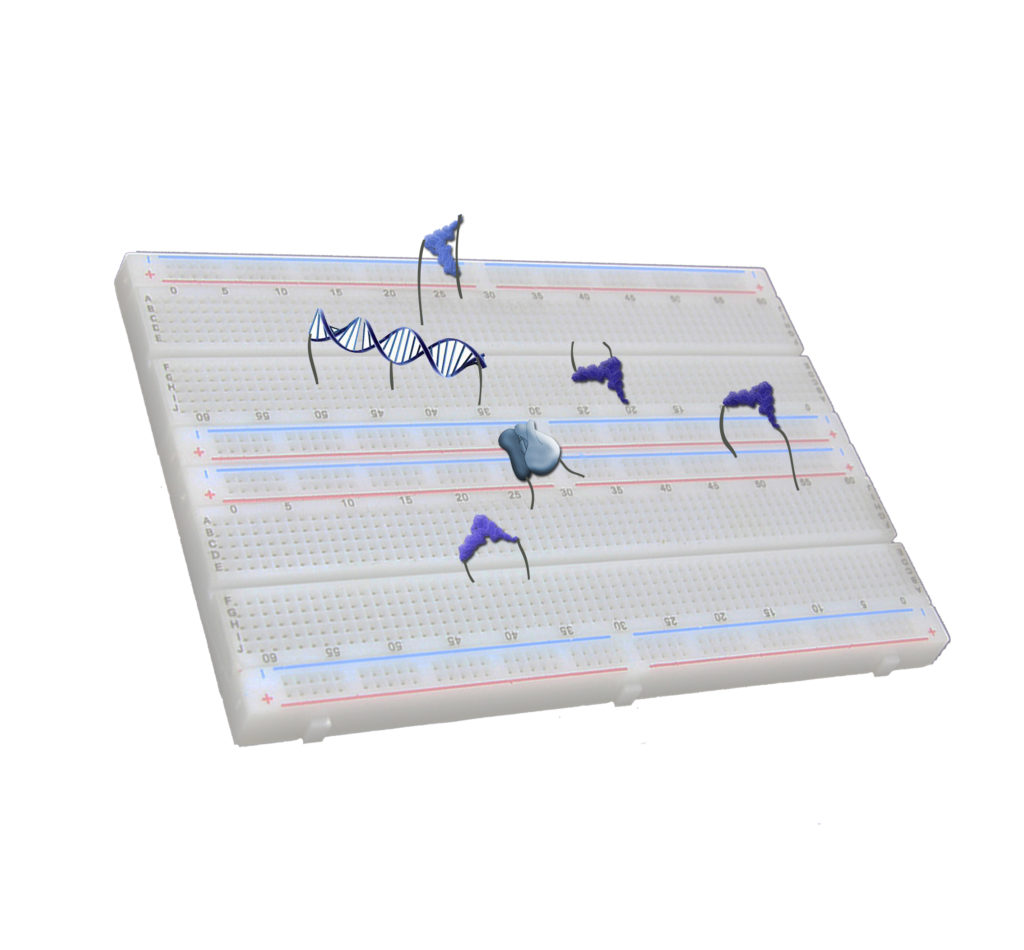Biocomputing

As we are approaching the limits of technological abilities of silicone microchips, biological computation is one of the alternatives for future development of computing devices.
Due to the complex and unpredictable nature of live cell biochemistry, we use simpler synthetic minimal cells to engineer and validate biological circuits.
We engineered biocomputing platform for constructing Boolean logic gates in synthetic cell system.
TRUMPET stands for Transcriptional RNA Universal Multi-Purpose GatE PlaTform.
The platform allows constructing orthogonal universal Boolean logic gates, including layering gates to engineer complex circuits. The logic gate design tool includes sequence validation and folding tests. More at trumpet.bio
Very large-scale genetic circuit design automation
We will build liposome based synthetic minimal cell based soft-computing circuits using genetic logic gates and sequential synthetic cell fusion. The proposed research will lead to a 105 scale-up of our ability to implement information processing in cells.
Large, complex genetic circuits will be implemented in both living cells and non-living vesicles, offering extremely dense and low-power computing. The proposed research spans the scale from computing in individual cells to that performed by multicellular ecological systems.
Here, insight is taken from software engineering to make genetics programmable. Key to our approach is refactoring genetics such that units of regulation are simple and modular and thus are able to be put together by EDA software.
In other words, it is not enough to build software to model genetics, rather it also requires building the genetics that can be put together by the software. This has led to new design principles in modularity and insulation, which we extend here by utilizing the principles of multicellular computing.
The use of non-living cell free systems and synthetic cells is a potential path towards systems that incorporate physical materials from biology and semiconductors.
Thank you for support: NSF and Semiconductor Research Corporation.
This work is done in collaboration with Eduardo Sontag and Chris Voigt.
